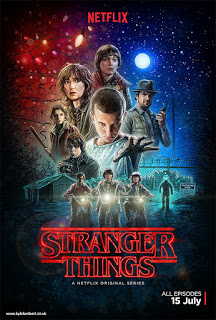Oh, how video gamers (myself included) have long awaited this movie. THIS was the one that was going to break the “curse” of the video game-movie. How could this possibly go wrong? Take Two Oscar winners and an Oscar-worthy lead headlining the cast, and throw in $130 million and such a wildly popular game property, and surely you’ve got a slam-dunk, right? I mean, there’s no way a capable filmmaker like Justin Kurzel could screw up this thing, right? RIGHT???
Yup, you guessed it - they screwed it up.
The story of Assassin's Creed revolves around Callum Lynch (Michael Fassbender), a convicted murderer who is saved from a death sentence by the mysterious Abstergo Indus-tries, who give him a second chance at life if he aids them in a scientific “endeavor” (why he was on Death Row is never adequately ex-plained to us, other than Callum’s mumbling about the person he supposedly murdered was “a pimp” - I guess that clears up all the moral ambiguity). Lynch is made to enter a device called The Animus, which allows him to access genetic memories contained within his DNA of distant relative Aguilar de Nertha (also played by Fassbender), a mysterious member of a secret society in 15th-century Spain. It seems Aguilar hid a relic of some sort that would enable the nefarious Templars to remove Free Will from mankind, allowing them to exert more control over human destiny (I’m not making this up, people…), and by having Lynch use the VR-like Animus to vicariously re-live Aguilar’s experiences, the Templars hope to learn this relic’s location.
 If Assassin’s Creed had been made as a period piece, with Aguilar as the hero, it may well have worked as a kind of heightened period epic – something like 300 meets Kingdom of Heaven. The movie’s best sequences are the Spanish Inquisition-set action scenes, inventively choreographed and beauti-fully executed. The game-inspired brand of wushu-meets-parkour in these scenes delivers some genuinely awe-inducing feats - a mid-carriage-chase wall-flip and a dead-eye ricochet shot wowed me, and helped to partially compensate for the dramatic lulls. The period production design and the thundering score by Kurzel’s brother Jed are better than the movie deserves, but even these sequences could have fared better, as Kurzel falls prey to the hyper-editing and spasmic-camera movements that so many action movies seem to suffer from anymore.
If Assassin’s Creed had been made as a period piece, with Aguilar as the hero, it may well have worked as a kind of heightened period epic – something like 300 meets Kingdom of Heaven. The movie’s best sequences are the Spanish Inquisition-set action scenes, inventively choreographed and beauti-fully executed. The game-inspired brand of wushu-meets-parkour in these scenes delivers some genuinely awe-inducing feats - a mid-carriage-chase wall-flip and a dead-eye ricochet shot wowed me, and helped to partially compensate for the dramatic lulls. The period production design and the thundering score by Kurzel’s brother Jed are better than the movie deserves, but even these sequences could have fared better, as Kurzel falls prey to the hyper-editing and spasmic-camera movements that so many action movies seem to suffer from anymore. Sadly, we only spend three all-too-brief sequences in that period, with the rest of the film being stuck in this murky-blue antiseptic scien-tific facility where everyone has that slit-eyed counten-ance that ensures you know they’re up to no good. Fassbender is a dour, dull hero in both temporal spheres, and Cotillard and Irons both seem to just float through their roles, with an apparent lack of interest that I couldn’t tell was an acting choice or actual boredom on their part. The cast aren’t aided by the humorlessness of the screenplay, which treats all this hooey with a degree of seriousness that makes it all the more ludicrous. Even possibly interesting secondary characters get the short end of the screenplay - Charlotte Rampling, another distinguished actor, pops up briefly as the Templars’ head modern head honcho, but has a criminally minimal amount of screen time.
Sadly, we only spend three all-too-brief sequences in that period, with the rest of the film being stuck in this murky-blue antiseptic scien-tific facility where everyone has that slit-eyed counten-ance that ensures you know they’re up to no good. Fassbender is a dour, dull hero in both temporal spheres, and Cotillard and Irons both seem to just float through their roles, with an apparent lack of interest that I couldn’t tell was an acting choice or actual boredom on their part. The cast aren’t aided by the humorlessness of the screenplay, which treats all this hooey with a degree of seriousness that makes it all the more ludicrous. Even possibly interesting secondary characters get the short end of the screenplay - Charlotte Rampling, another distinguished actor, pops up briefly as the Templars’ head modern head honcho, but has a criminally minimal amount of screen time.
Throughout the movie, Kurzel treats the goofy material with a dogged earnestness he didn’t feel compelled to lavish on his Shakespeare (last year’s Macbeth), and whatever grandeur might have existed in Andy Nicholson’s production design or Sammy Sheldon Differ’s costumes is pretty much lost in the images, which are maddingly murky even in 2D format (one can only imagine they’ll be even darker and more impenetrable in 3D).
It’s so frustrating to get such a “blah” film as this, while seeing that there are good things about it. I understand fifteen hours of playing a video game is not the same thing as making a 110-minute movie, but this movie has things in it that convince me it could’ve been done better than this. Alas, we still await the “good” video game-movie, ‘cause this one ain’t it, folks. Assassin’s Creed gets the style of the video games so right, yet unlike those games, it fails so miserably in creating characters worth caring about, or telling us a story we could even halfway swallow.








































